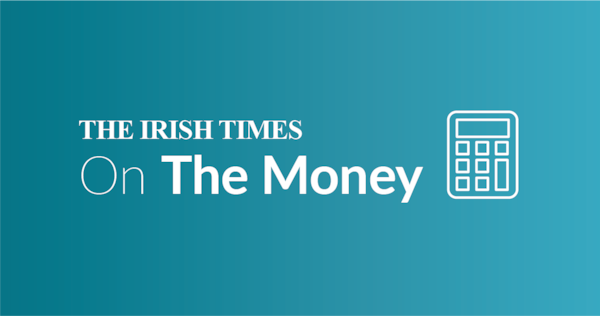Influential international magazine the Economist produces a “rich list” of countries each year – a league table of how income levels in different countries compare.
This year Ireland was excluded, as the authors said its data was “polluted by tax arbitrage”. This is, of course, correct. Gross domestic product (GDP) is the general measure of comparison used for such studies, and Ireland’s data is completely messed up by the tax planning activities of the multinationals, which generally use intellectual property assets to declare as much profit as they can here. This is – generally - legal, but it hugely inflates Irish GDP and makes us look richer than we are. So where do we actually rank in terms of incomes compared to other countries?
1. The GDP dilemma
The Economist – along with most other bodies including EU agency Eurostat, the IMF and private forecasters – take GDP as the basis for their calculation and divide it by the population to get a measure of income per head. A calculation is then generally made to adjust for different price levels in various countries. These GDP per capita figures – published by Eurostat – show Ireland in second place to Luxembourg in the EU and at about third place in the world, with Singapore also ahead. (Small territories such as Macau and Monaco also feature high up on some lists.)
In cash terms, EU GDP per capita was estimated at €33,550 in 2024, while Irish GDP per capita was put at €88,600. This is before adjustment for different price levels, used in the international comparisons.
READ MORE
[ Ireland not a ‘truly rich’ country, according to The EconomistOpens in new window ]
This is plainly not a reflection of the actual income levels here compared to other countries. In fact, with GDP per capita here more than twice the EU average, even after adjusting for different price levels, the figures here are off the charts and best ignored.
2. Making the adjustment
So how can we do better? Well, the Central Statistics Office (CSO), in consultation with other experts, developed a measure called modified gross national income (GNI) a few years ago. This factors out the impact of a few things – the intellectual property factor, aircraft leasing activity and the impact of companies which redomicile their headquarters here.
If we do a rough calculation and use this figure for Ireland and GDP per head for elsewhere (in most countries there would not be much difference), then Ireland falls down the list. We move from second place, with a figure 211 per cent of the EU average, to fourth, with a figure about 24 per cent above the EU average, having been overtaken by the Netherlands and Denmark.
Interestingly, when former Central Bank governor Patrick Honohan made a similar calculation in his landmark piece on the issue in 2021 – relating to 2019 data – Ireland was in eighth place (This article broadly follows the path which he set in terms of looking at this issue).
The figures suggest some relative improvement in the intervening years, when economic growth here has exceeded that elsewhere in the EU, even if using statistics other than GDP.

Why is Ireland not considered a truly rich country?
However, given the approximate nature of such calculations, it is worth noting that the four other countries that were just ahead of us in 2019 – Germany, Austria, Netherlands and Sweden – are now, on this measure, just behind us, bunched with GDP per capita between 13 and 16 per cent above the average.
Does this still overstate Ireland’s position? Possibly yes, as we will see below. And it is difficult to see Ireland as better-off on average than traditionally high-income states such as Germany and Sweden.
It is also worth noting that what we are looking at are average figures which make no allowance for the spread of income. We know, for example, that Ireland has a group of high-income earners working for the multinational sector and for professional service firms largely reliant on that sector. This will pull up the average here. The Economist also excluded Luxembourg because of the high number of workers who travel to work in highly paid financial sector jobs there each day from surrounding states. All countries have their peculiarities, but some are more peculiar than others.
3. What we consume
Another commonly used measure is to look at what people consume. As well as consumer spending – for which figures are regularly reported in Ireland – comparisons use figures which estimate the amount of money spent by the State in directly supporting households, through measures such as welfare or providing education and childcare.
This is known as “actual individual consumption”, or AIC. Eurostat calculates (see map) that Ireland’s AIC per capita is about the EU average - 99 per cent, to be precise. This has risen from 94 per cent since 2019. Again, this is adjusting for different price levels in different countries.
Illustrating how the basis of comparison can affect the outcome in this area, the Dutch national statistics office has done its own calculation of AIC across the EU, which puts Ireland in fifth place. In cash terms it estimates the AIC here at €30,900 versus the EU average of €26,200, having made its own adjustment for different price levels. It is not clear why its result is different; the generally used figures are those from Eurostat, which were published in June.
A point worth noting is the high level of savings in Irish households here, which depresses consumption figures a bit – and thus moves us down the league – but may help to support consumption in future.
Over-consumption is also possible. Before the financial crash in 2008, Irish AIC surged well above the EU norm. But this was built on unsustainable borrowing and spending, fuelled by State spending based on what turned out to be transient tax revenues.
4. The conclusions
What do we make of all this? A few points are clear. One is that Ireland’s GDP data has become progressively more detached from reality as of the middle of the last decade. The first real indication of this was the “Leprechaun economics” saga of 2015, when Irish GDP was adjusted upwards by more than 26 per cent, catching the attention of US economist Paul Krugman. There was another surge upwards in 2022.
Ireland’s “real” economy has grown for sure, but the GDP figures have overstated this consistently. And so the actual level of GDP has got further and further detached from reality. It is now more than 40 per cent higher than modified GNI, according to the latest CSO estimates. This messes up international comparisons, affects our contributions to the EU budget and brings some unwelcome international attention here.
Second, when we make adjustments, Ireland moves closer to reality, but exactly where we stand remains open to some debate. In common-sense terms, Ireland does not feel better-off than some of the higher-ranking EU countries such as Germany, Austria and Sweden. Perhaps we are in line with or just behind these countries, but ahead of Southern Europe? If we took a midpoint between the modified GNI per head and the AIC, that is where we would be left.
Third, on any criteria, Ireland has made progress over the longer term and has made some relative gains since 2019. This is not to gainsay the problems, of course. The average figures make no allowance, for example, for intergenerational inequality or the problems of younger people getting on to the housing ladder. But on any of the averages measure Ireland’s relative position has improved over the last five years.
And finally, income is only one measure of national wellbeing. There are a lot of other factors which affect standards of living. One is wealth – the amount of property, investments and cash in the bank held by households. Others are the efficiency with which services are delivered to the public, the environment in which they live and even the weather. There are hosts of other indices which attempt to measure some of these factors – but while national income is hard to compare across countries, doing the same with wellbeing is next to impossible.












